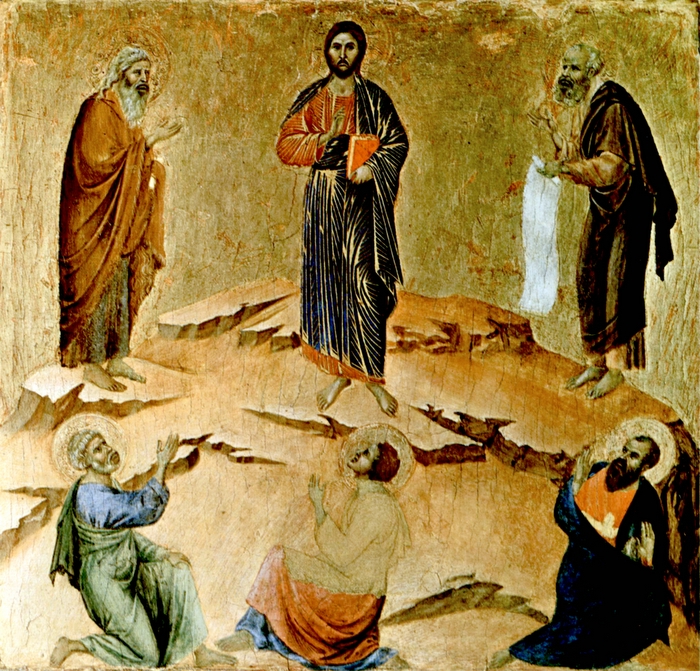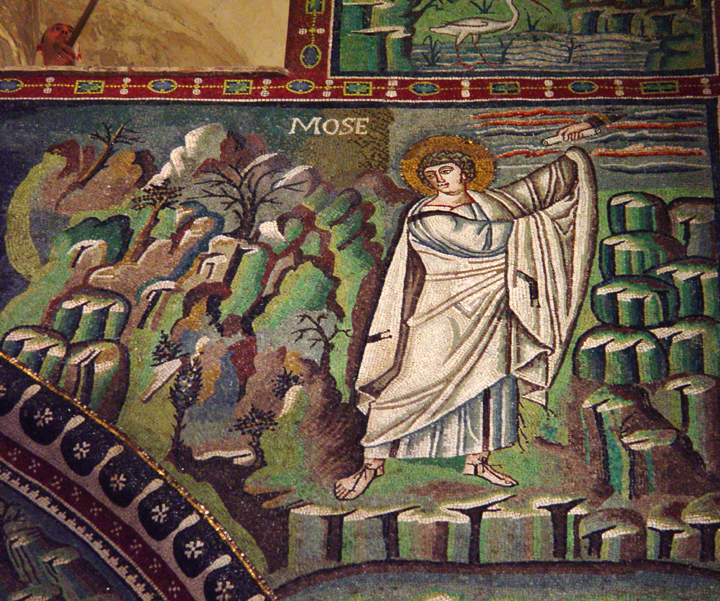2 Corinthians 4:3-6 New Revised Standard Version
3 And even if our gospel is veiled, it is veiled to those who are perishing. 4 In their case the god of this world has blinded the minds of the unbelievers, to keep them from seeing the light of the gospel of the glory of Christ, who is the image of God. 5 For we do not proclaim ourselves; we proclaim Jesus Christ as Lord and ourselves as your slaves for Jesus’ sake. 6 For it is the God who said, “Let light shine out of darkness,” who has shone in our hearts to give the light of the knowledge of the glory of God in the face of Jesus Christ.
******
On Transfiguration Sunday we join with Jesus as he climbs the mountain with three of his disciples. When they arrived on that mountain top Jesus is joined by Moses and Elijah, the lawgiver and the prophet. While these three conversed, Jesus was transfigured. Then a voice from heaven called out “This is my Son, the Beloved; listen to him!” (Mark 9:2-10). The heavenly message was essentially the same as the one heard by Jesus at his baptism. Mark’s description is of course spare in detail, but we have enough to get a sense of the experience. And from Peter’s response to the event, it’s clear that something dramatic has occurred. If we use Paul’s words from 2 Corinthians as a guide, then what we have before us is an unveiling of the light of God present in Jesus. As Vladimir Lossky notes, “In so far as God reveals Himself, communicates himself and is able to be known, He is Light. The divine light is not an allegorical or abstract thing; it is given in mystical experience” [Mystical Theology of the Eastern Church, p. 220]. Might the transfiguration be a moment of mystical experience where the “light of the gospel of the glory of Christ, who is the image of God” is revealed to these three witnesses?
In the story of the transfiguration event, we see the veil that kept the three disciples from fully perceiving that light is lifted for a moment. However, according to Paul, the veil continues to cover the eyes of those who to this point fail to see the light of Christ’s glory. For Paul, that veil will be lifted as we come to understand the things of God as they are revealed in Christ. So, if we participate in the life of Christ, we can see the glory of the Lord with unveiled faces, and thus experience transformation through the Spirit (2 Cor. 3:12-18). What we see here in 2 Corinthians 4 is rooted in the conversation that begins in chapter 3 that takes into consideration the revelation of God’s presence to Moses.
This brief reading for Transfiguration Sunday stands as part of a larger conversation about Paul’s ministry. Some have challenged his ministry and he seeks to defend that ministry by speaking to the spiritual realities of his day. Part of his defense includes a word about the “god of this world” who blinds the eyes of the unbelievers. We moderns struggle with the idea that there are spiritual forces that resist the ways of God. While we may have explanations unavailable to the ancients about how the world works, it’s also possible that we are susceptible to spiritual reductionism. We may have taken the process of demythologizing too far and have thus clouded our minds from seeing deeper things. Perhaps it is time to reimagine the spiritual realm. If so, might not the story of the transfiguration be a good place to start? As we do this, we can ask the question, what are the “things” that cause this veil to stay in place and how might it be lifted? We know from Paul’s letters that there was all manner of issues present in the Corinthian church that got in the way of their ability to experience the full presence of God. So, what are the issues present in the modern context?
A word of caution is necessary as we approach this passage. The contrast present in this letter of Paul that seems to pit Moses against Jesus lends itself to a supersessionist interpretation. As Barbara Brown Taylor reminds us, in our context, “the proclamation of Christ’s light does not require the debasement of Moses’s light. Those who are being transformed by God’s shining presence can find far better ways to witness to what they see in Jesus’ face.” [Feasting on the Word, p. 451]. So, be careful if you attempt to contrast law and gospel.
While the glory of God that Jesus embodies might be veiled to some, however, that veiling is understood, there are moments when the veil is lifted. That is part of the message of the Transfiguration. Something happens on the mountain, and the disciples of Jesus see the light of the knowledge of the glory of God in the face of Jesus Christ.” As Jesus and his disciples gather on the mountain top with Moses and Elijah, the disciples (Peter, James, and John) appear to have a mystical experience in which the veil that covers Jesus in his humanity is removed for a moment and they see Jesus in the fulness of his glory. They see his divinity shine through for a moment.
Gregory Palamas, a medieval Orthodox theologian, writes of the Transfiguration:
The light of the Lord’s transfiguration does not come into being or cease to be, nor is it circumscribed or perceptible to the senses, even though for a short time on the narrow mountain top it was seen by human eyes. Rather, at that moment the initiated disciples of the Lord “passed,” as we have been taught, “from flesh to spirit” by the transformation of their senses, which the Spirit wrought in them, and so they saw that ineffable light, when and as much as the Holy Spirit’s power granted them to do so. [Gregory Palamas, The Saving Work of Christ: Sermons by Saint Gregory Palamas (p. 43). Mount Thabor Publishing. Kindle Edition].
Gregory speaks of such mystical encounters coming as a result of contemplation:
Those who behold God in divine contemplation need no other light, for He alone is the light of those who live forever. What need is there for a second light when they have the greatest light of all? Thus, while He was praying, He became radiant and revealed this ineffable light in an indescribable way to the chosen disciples in the presence of the most excellent of the prophets, that He might show us that it is prayer which procures this blessed vision, and we might learn that this brilliance comes about and shines forth when we draw near to God through the virtues, and our minds are united with Him. It is given to all who unceasingly reach up towards God by means of perfect good works and fervent prayer, and is visible to them. Everything about the blessed divine nature is truly beautiful and desirable, and is visible only to those whose minds have been purified. Anyone who gazes at its brilliant rays and its graces, partakes of it to some extent, as though his own face were touched by dazzling light That is why Moses’ countenance was glorified when he spoke with God (Exod. 34:29). [The Saving Work of Christ: Sermons by Saint Gregory Palamas (p. 44). Kindle Edition].
According to Gregory, to have this experience one must put oneself in a position to encounter the unveiled Christ so that we too might behold his glory. Something similar is true for Paul as well, the light that shines in the darkness is Christ as one beholds the face of Jesus.
Transfiguration Sunday serves as an invitation to see Jesus with unveiled faces, to set aside the distractions of this world, and to see, if only for a moment, a glimpse of Jesus’ full divinity. As we do so we can participate in the divine energies, moving us toward union with God in Christ. As Athanasius declared, God became human so that humans might be God—not in the sense that we share the divine essence, but through mystical experience of God’s light, we can experience union with God. In this, may the light shine bright, bringing hope to our world.
Image Attribution: Latimore, Kelly. Transfiguration, from Art in the Christian Tradition, a project of the Vanderbilt Divinity Library, Nashville, TN. http://diglib.library.vanderbilt.edu/act-imagelink.pl?RC=57114 [retrieved February 6, 2021]. Original source: https://kellylatimoreicons.com/contact/.




 My partner in crime at the blog, Bob Cornwall
My partner in crime at the blog, Bob Cornwall 



